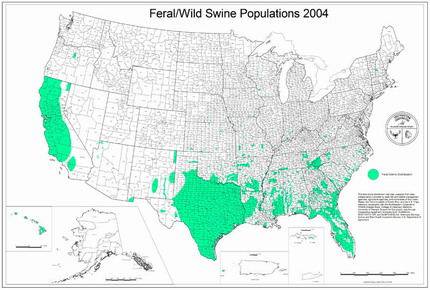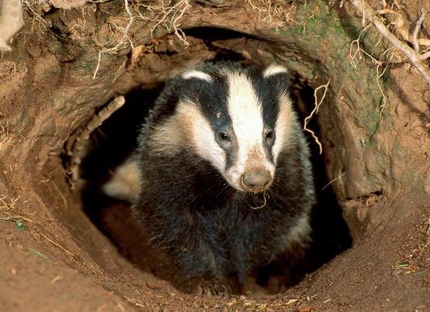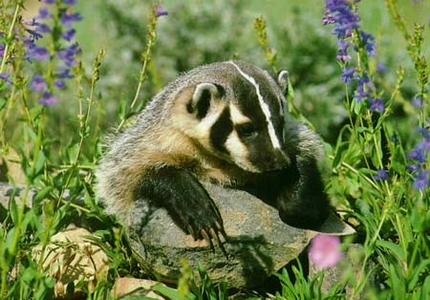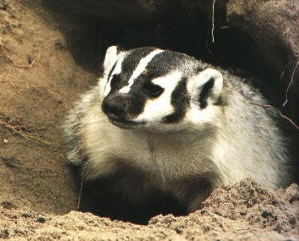Badgers are members of the weasel family and have the musky odor characteristic of this family. They are especially adapted for burrowing, with strong front legs equipped with long, well-developed claws. Their digging capability is used to pursue and capture ground-dwelling prey. Typical burrows dug in pursuit of prey are shallow and about 1 foot (30 cm) in diameter. A female badger will dig a deeper burrow (5 to 30 feet long [1.5 to 9 m]) with an enlarged chamber 2 to 3 feet (0.6 to 0.9 m) below the surface in which to give birth. Dens usually have a single, often elliptical entrance, typically marked by a mound of soil in the front. Continue reading Badger Biology and Behavior
Month: June 2007
Food Habits of Badgers
Badgers are opportunists, preying on ground-nesting birds and their eggs, mammals, reptiles, amphibians, and insects. Common dietary items are ground squirrels, pocket gophers, prairie dogs, and other smaller rodents. Occasionally they eat vegetable matter. Metabolism studies indicate that an average badger must eat about two ground squirrels or pocket gophers daily to maintain its weight. Badgers may occasionally kill small lambs and young domestic turkeys, parts of which they often will bury.
Badger Identification
The badger (Taxidea taxus) is a stocky, medium-sized mammal with a broad head, a short, thick neck, short legs, and a short, bushy tail. Its front legs are stout and muscular, and its front claws are long. It is silver-gray, has long guard hairs, a black patch on each cheek, black feet, and a characteristic white stripe extending from its nose over the top of its head. The length of this stripe down the back varies. Badgers may weigh up to 30 pounds (13.5 kg), but average about 19 pounds (8.6 kg) for males and 14 pounds (6.3 kg) for females. Eyeshine at night is green.
Range of Feral Hogs in the United States
Christopher Columbus first introduced members of the family Suidae into North America in 1493 in the West Indies. The first documented introduction of hogs into the United States was in Florida by de Soto in 1593. More introductions followed in Georgia and the Carolinas, which established free-ranging populations in the Southeast. Free-ranging practices continued until they finally became illegal in the mid-twentieth century.

Populations of unclaimed, wild hogs increased and spread throughout the Southeast. Domestic hogs were released in California in 1769 and free-ranging practices there also resulted in a feral hog population. European wild boar were released at Hooper Bald, North Carolina, in 1912, and from there introduced to California in 1925.
Wild pigs (feral hogs) are found throughout the southeastern United States from Texas east to Florida and north to Virginia; and in California, Hawaii, Puerto Rico, and the Virgin Islands. The local introduction of these animals for hunting purposes occurred in North Carolina, Tennessee, Texas, Louisiana, and California. The National Park Service reports feral hogs in 13 National Park Service areas. They occur in many state parks as well (Mayer and Brisbin 1991). Feral hogs are also found in Hawaii, Australia, New Zealand, and several other South Pacific Islands.


